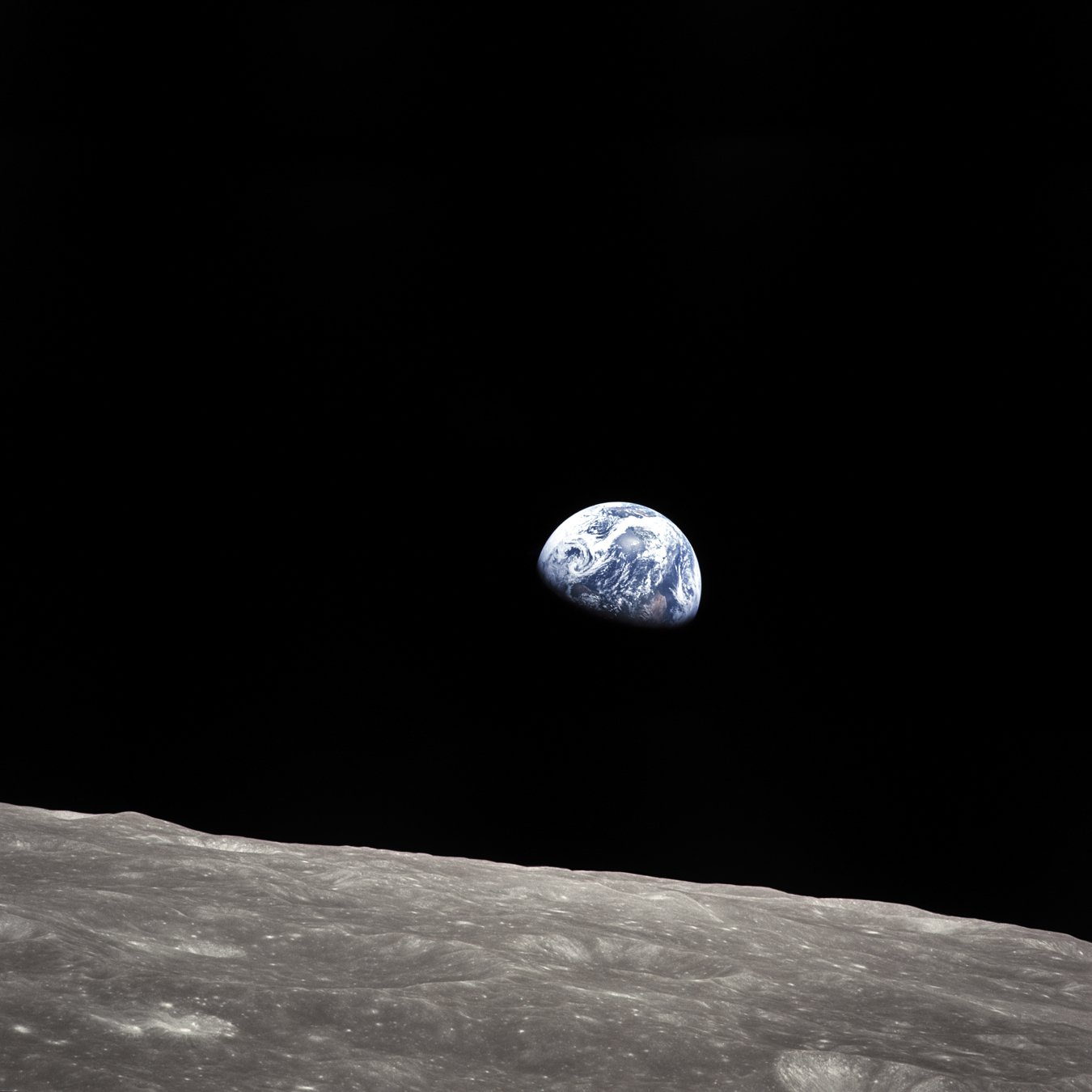About The Project
Apollo Remastered is a project completed in 2022 by imaging specialist Andy Saunders, to digitally remaster and restore the original flight film from our first missions to the Moon.
Born out of a desire to see a photograph of one of the most important moments in history - Neil Armstrong on the Moon - and frustrated that this effectively did not exist (Armstrong held the one and only camera), Saunders applied a complex digital processing technique to multiple frames of the 16mm ‘movie’ footage to produce the image that was missing from the history books. Released for the 50th anniversary of Apollo 11, it was front page news and is regarded as the only clear, recognizable image of Neil Armstrong on the Moon.
Saunders then critically assessed the whole back-catalog of Apollo imagery and found that it was inconsistent, and universally of a quality not befitting the technical capability of the original photographic equipment and film, nor the film’s historically significant content.
Apollo On Film
The original NASA photographic film from the Apollo missions is some of the most important and valuable film in existence. It is securely stored in a freezer, to help maintain its condition, in Building 8 at Johnson Space Center, Houston. It never leaves the building – in fact, the film rarely leaves the freezer. The images it contains include the most significant moments in our history, as humankind left the confines of our home planet for the first time and ventured into the unknown; ultimately setting foot on another world.
While the astronauts’ primary goal was to simply record their activities, they captured images that transcend documentation.
The photographs from the lunar surface are as close as we can get to standing on the Moon ourselves, and for the first time, we were able to look back at Earth from afar, experiencing the “overview effect” - the cognitive shift that elicits an intense emotional experience upon seeing our home planet from space for the first time. The “Blue Marble” photograph, taken as Apollo 17 set course for the Moon, depicts the whole sunlit Earth, and is the most reproduced photograph of all time. Along with Apollo 8’s “Earthrise,” which depicts Earth above the lunar horizon, it was a catalyst for the environmental movement that continues today.
Many of these images from Apollo are so well known they are seared into our collective memory; they are visual artifacts produced by space explorers. The treasures they returned to Earth included 842lbs of Moon rock, and their film, exposed in the alien environment.
The Overview Effect (NASA / JSC / ASU / Andy Saunders)
A Half-Century Wait
As the original flight film lay hermetically encapsulated in its frozen vault for half a century, almost every Apollo image we have ever seen has been based on copies of master duplicates, or copies of copies, leading to the gradual degradation in the quality of the images we see. This process has only accelerated with the prevalence of digital representations of these images online. As a result, many of the photographs from early spaceflight, including some of the most important in our history, are typically poorly represented.
The frozen vault, Houston, Texas (NASA / ASU)
The digital scanning process by NASA / ASU
In recent years, however, the original film for each mission has been removed from the vault, thawed, cleaned, and digitally scanned to an unprecedented resolution. There is a huge treasure trove of around 35,000 photographs, the vast majority of which are rarely seen; in part due to the quality or exposure of the film and older, lower quality scanning technology.
Existing imagery (NASA)
Remastered imagery (NASA / JSC / ASU / Andy Saunders)
The new high resolution, high bitrate scans of the original flight film offer a step change in quality to anything seen since the moment the photographs were captured. However, the analog film source must be digitally processed in order to be presented effectively. In their raw state they are typically very under-exposed and difficult to process. Applying the latest digital processing techniques, time and effort to sympathetically remaster this film however, is rewarded with an image of unprecedented detail and clarity.
The opportunity to view Apollo as never before, convinced Saunders to spend several years undertaking the project of assessing all 35,000 still photographs and curating / digitally remastering them.
As part of the project, in addition to the 70mm still photographs, Saunders also assessed the 10 hours of 16mm ‘movie’ footage captured during the Apollo missions - in places frame-by-frame. The complex stacking technique, further developed by Saunders especially for this project to enable its application to more dynamic scenes, was then applied to appropriate sequences of film in order to reveal detail from these historic missions that has never been seen before.
Life on board Apollo 13, created from over 1,000 image samples of 16mm ‘movie’ film (NASA / Andy Saunders - Digital Source: Stephen Slater)






